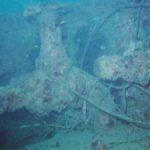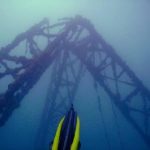Featured Spots
Miami has always been a hotspot for vacationers. Miami Beach’s South Beach, or SoBe, is one of the most popular cities. The beaches are wide and clean; the Atlantic waters shimmer in year-round sunshine, and the Art Deco architecture is waiting to be explored. Miami is a true international city where you’ll find every food imaginable, hear a multitude of languages, and experience dazzling nightlife. Visitors must be sure to explore Lincoln Road Mall, Washington & Collins Avenues, and Ocean Drive, the heart of South Beach. For a slower pace, visitors will enjoy Coconut Grove, Surfside, and Key Biscayne. With dozens of dive boats now operating in the Miami area, it’s easy to find accommodations close to a dive boat charter.
And now, thanks to Department of Environmental Resource Management (DERM) and Ben Mostkoff’s vision to develop artificial reefs, Miami is also one of the best dive spots in Florida. Since 1981, artificial reefs have been created by sinking ships, tugs, army tanks, an airplane, radio antennae, and even manmade concrete “reefs”. These structures have quickly attracted the growth of corals and a myriad of sea life, making for some dramatic wreck diving and fantastic sites for underwater photography. Numerous artificial reefs are spread offshore along the 45 miles of oceanfront in Miami-Dade County.
Ben Mostkoff began the DERM artificial reef program in 1981. Mostkoff and others recognized that Florida’s natural reefs were fragile and in danger of disappearing as more and more humans enjoyed fishing and diving on the reefs. South Florida reefs slow down wind and waves which slows the erosion of the coastline. By sinking durable, environmentally safe materials in specific areas of the ocean bottom, DERM has been able to increase habitats for marine life and prevent erosion while also increasing tourism and allowing a thriving dive industry to develop.
Dozens of dive charters now operate in the Miami area. Since the artificial reefs are all close to shore and are placed in groupings, it’s easy to find a tour that will allow you to dive more than one wreck or reef. Most of the wrecks are for intermediate and advanced divers, but there are a few artificial structures that can be viewed by novice divers and snorkelers.
South of Miami Beach begins a long line of islands known as Keys. The shallow waters off of theses keys have numerous patch reefs and coral mounds that are excellent sites for snorkeling. The reefs are in 15 to 40 feet of water. The water is usually quite clear and the dark coral mounds are easily spotted against the white sandy bottom. The two largest Keys in the Miami area are Key Biscayne and Elliott Key. To the south of Elliott begin the Florida Keys which include all the keys from Key Largo to Key West.





